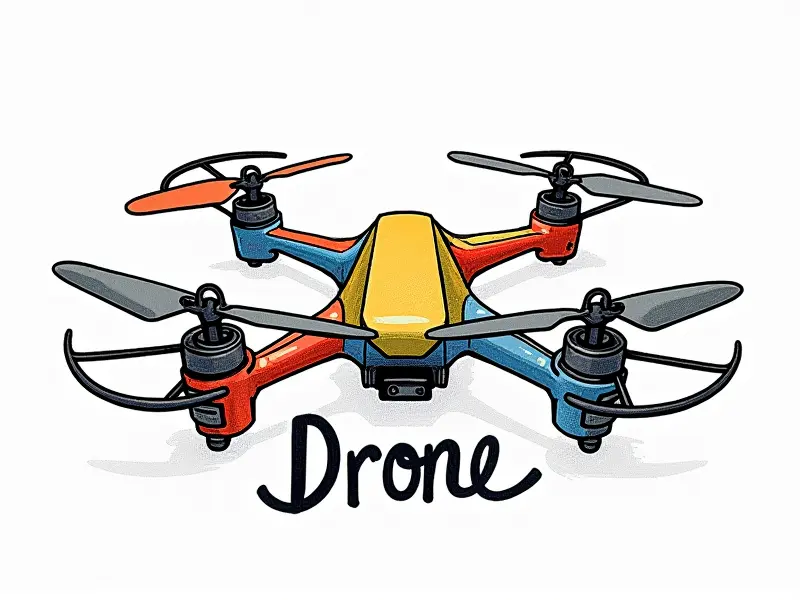What makes a RC airplane agile?

What Makes an RC Airplane Agile?
Agility in remote-controlled (RC) airplanes is a critical aspect for enthusiasts who seek to perform complex maneuvers and enjoy dynamic flight experiences. An agile RC airplane can execute sharp turns, rapid climbs, and quick descents with ease, making it the perfect choice for pilots looking to push their skills to new heights.
Top Tips for Agile RC Airplane Flight
To achieve agility in your RC flights, consider these essential tips:
- Master Basic Maneuvers: Start with fundamental flight techniques such as loops and rolls before moving on to more advanced maneuvers.
- Practice Precision Control: Focus on fine-tuning your control inputs for smoother, more responsive flight.
- Understand Aerodynamics: Gain a deeper understanding of how lift, drag, thrust, and weight affect your plane's performance.
Secrets to Maneuvering RC Airplanes Easily
Maneuverability is key to agile flight. Here are some secrets to enhance it:
- Balanced Weight Distribution: Ensure your plane's center of gravity (CG) is correctly positioned for optimal stability and responsiveness.
- Proper Wing Design: Use symmetrical airfoils or high-performance wings to improve lift-to-drag ratios.
- Fine-Tune Control Surfaces: Adjust the elevator, aileron, and rudder trim settings for precise control during maneuvers.
Techniques for Swift RC Airplane Handling
To handle your RC plane swiftly, follow these techniques:
- Quick Reflexes: Develop fast reaction times to respond promptly to changes in flight conditions.
- Smooth Inputs: Apply gentle and smooth control inputs to avoid overcorrecting or destabilizing the aircraft.
- Practice Hovering: Master hovering techniques to improve your plane's stability during maneuvers.
RC Airplane Design for Ultimate Agility
The design of an RC airplane plays a crucial role in its agility. Key aspects include:
- Lightweight Construction: Use lightweight materials like carbon fiber or foam to reduce overall weight.
- High Aspect Ratio Wings: Opt for wings with high aspect ratios (long and narrow) to improve lift efficiency.
- Sleek Aerodynamic Shape: Design the fuselage and wing profiles to minimize drag and maximize speed.
Master the Art of Agile RC Flying
Mastery in agile flying involves:
- Continuous Practice: Regularly fly your plane under various conditions to hone your skills.
- Study Flight Dynamics: Learn about flight dynamics and how different factors affect maneuverability.
- Seek Expert Advice: Consult experienced RC pilots for tips and insights on improving agility.
Enhance Agility with Advanced RC Plane Mods
Modifications can significantly boost your plane's agility. Consider the following upgrades:
- Electronic Speed Controllers (ESC): Upgrade to high-performance ESCs for better power delivery.
- Battery Technology: Use high-capacity, lightweight batteries to extend flight time and maintain performance.
- Propeller Selection: Choose the right propellers based on your plane's design and intended use.
Top Traits for Agile RC Planes
The best agile RC planes share these traits:
- Fully Servo-Controlled: Ensure all control surfaces are servo-controlled for precise adjustments.
- Built-in Stability Features: Incorporate stability features like auto-leveling or gyro stabilization.
- Durable Construction: Use robust materials to withstand the rigors of high-speed maneuvers.
How Design Affects RC Plane Maneuverability
The design of an RC plane directly influences its maneuverability. Key factors include:
- Airfoil Selection: Choose airfoils that provide the best lift-to-drag ratio for your intended maneuvers.
- Fuselage Design: Optimize fuselage design to reduce drag and improve aerodynamics.
- Wing Configuration: Experiment with different wing configurations (e.g., biplanes, triplanes) to find the best balance of lift and stability.
Boost Your RC Plane's Agility Today
To boost your plane’s agility immediately, try these tips:
- Adjust CG Position: Fine-tune the center of gravity to enhance responsiveness during maneuvers.
- Increase Wing Area: Add winglets or extend wingtips for improved lift and stability.
- Optimize Control Surface Settings: Calibrate your control surfaces for optimal performance in various flight modes.
Factors Boosting RC Airplane Maneuverability
The following factors can significantly enhance maneuverability:
- Pilot Skill Level: The proficiency of the pilot greatly affects how agile an RC plane appears to be in flight.
- Air Density: Higher air density (e.g., cooler temperatures) increases lift and can make planes more maneuverable.
- Wind Conditions: Tailwinds or headwinds can affect the plane's performance, impacting its agility.
Essential Features for Agile RC Planes
The following features are essential for agile RC planes:
- Dual-Rate Control Systems: Allow pilots to adjust control sensitivity for different flight modes.
- Mixing Functions: Enable complex maneuvers by coordinating multiple control surfaces simultaneously.
- Advanced Flight Modes: Incorporate features like acrobatic or aerobatic modes for enhanced performance.
Conclusion
In conclusion, achieving agility in RC airplanes involves a combination of proper design, skilled piloting techniques, and thoughtful modifications. By understanding the key factors that contribute to agile flight, you can enhance your RC plane's maneuverability and enjoy thrilling aerial performances. Whether through fine-tuning control surfaces or selecting high-performance components, every step taken towards improving agility brings you closer to mastering the art of RC flying.

